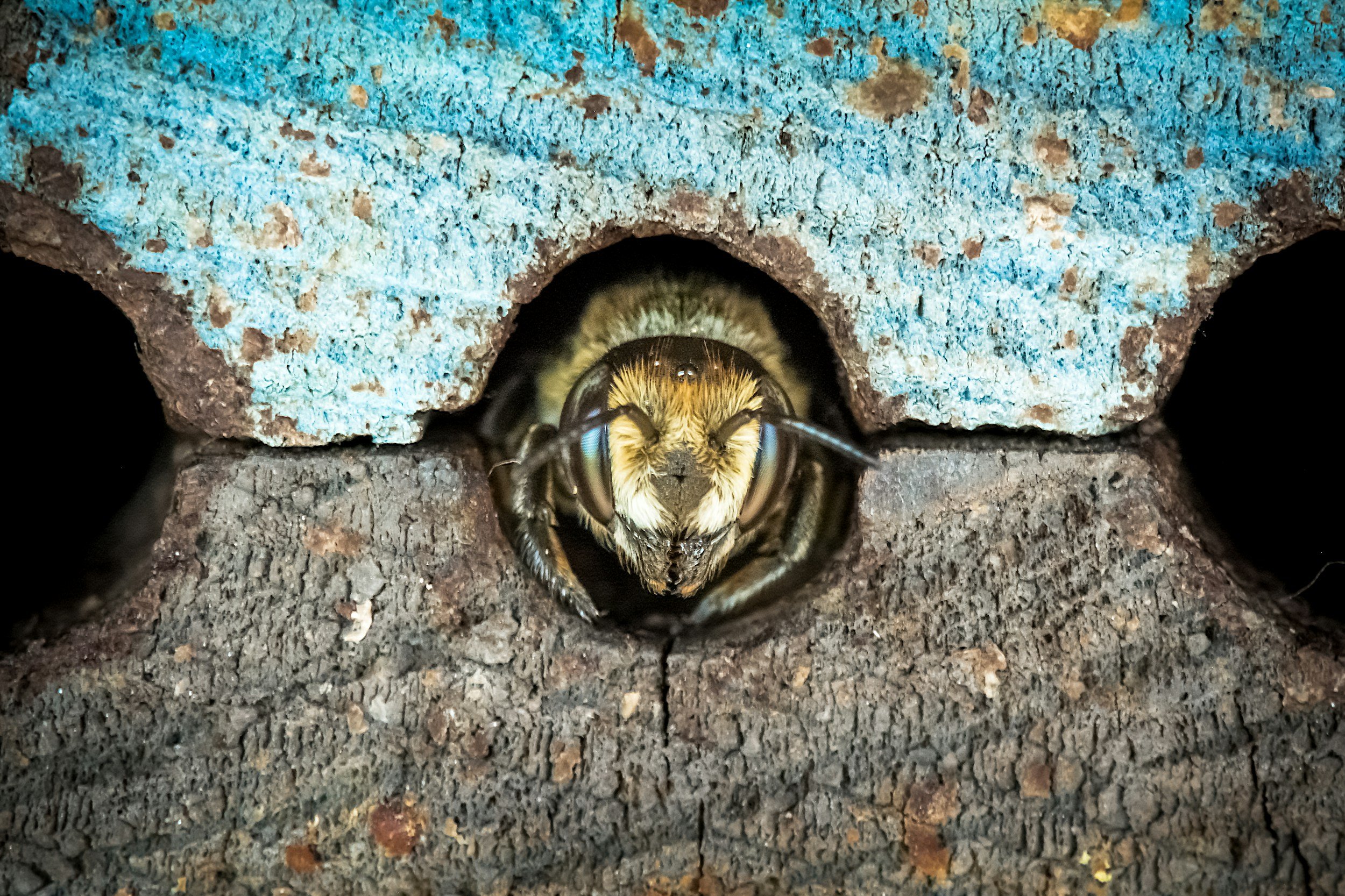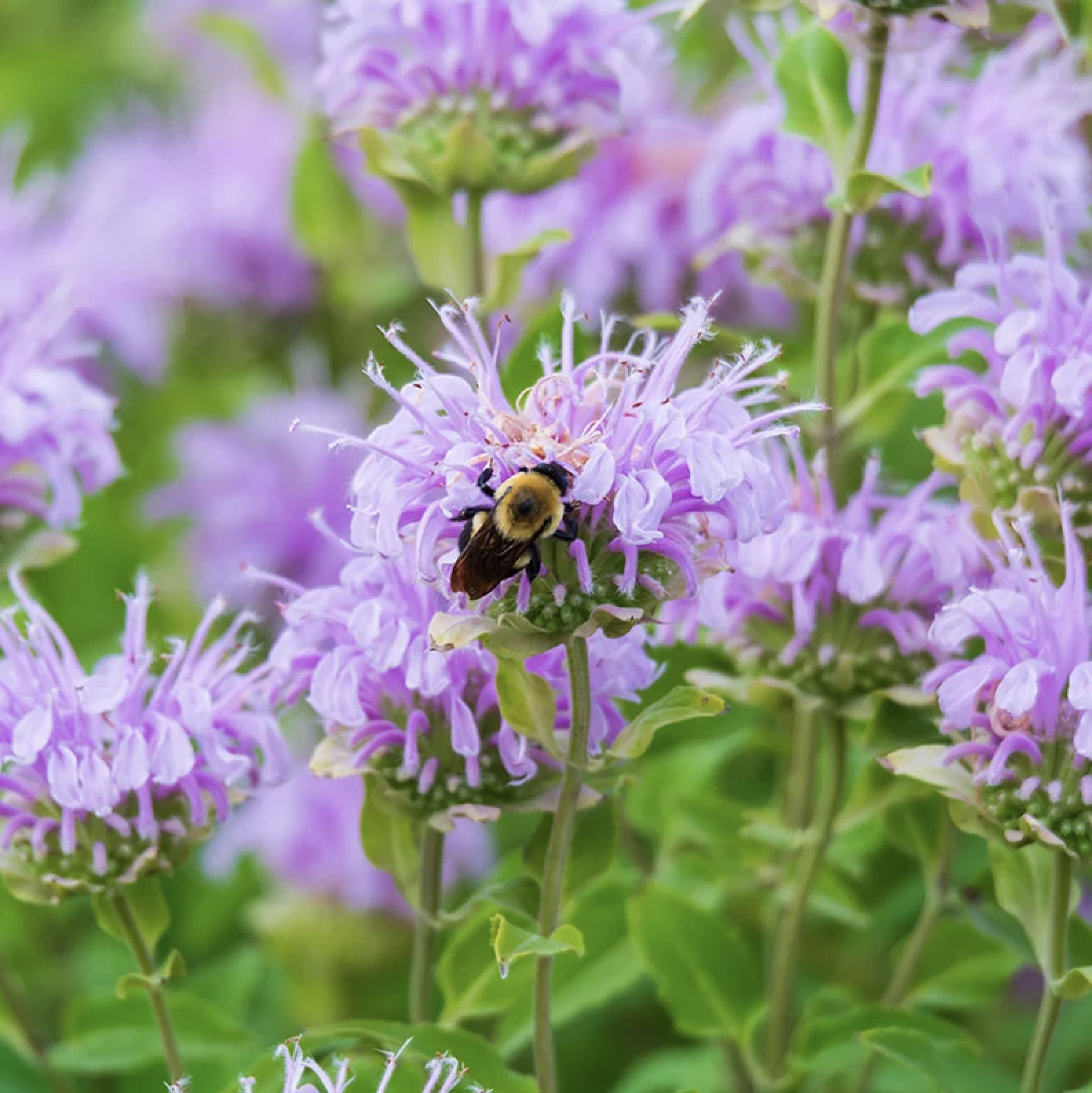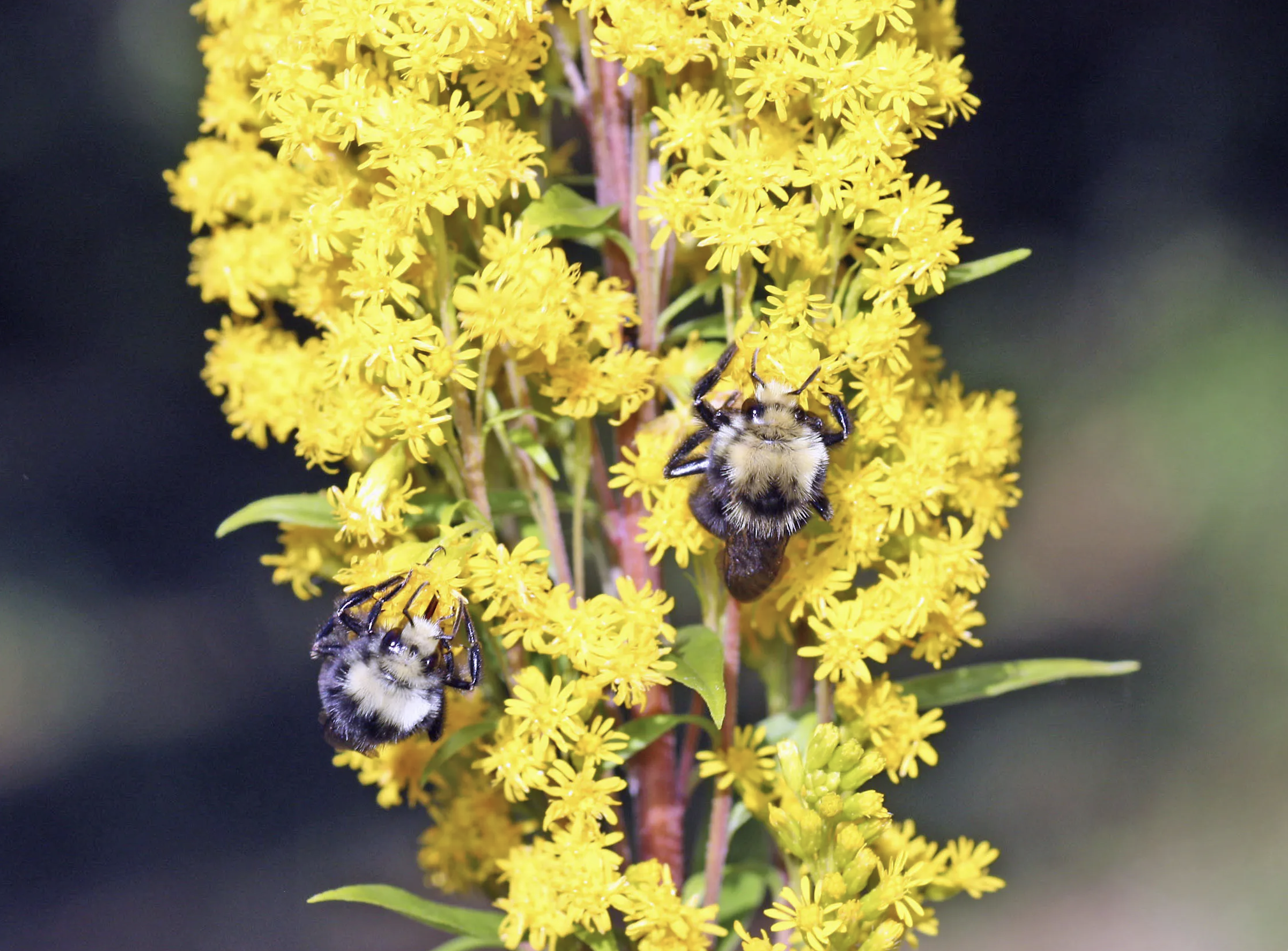Planting for Bees in Northern New Jersey: Creating a Thriving Pollinator Haven
Bees are essential pollinators, playing a crucial role in our ecosystems and food production. Northern New Jersey is home to a diverse range of native bees, including bumblebees, mason bees, sweat bees, and leafcutter bees. Unlike non-native honeybees, many of these species are solitary and nest in the ground, hollow stems, or wood cavities. By designing our gardens with their needs in mind, we can help support these critical pollinators while enhancing the beauty and productivity of our landscapes.
Providing Habitat for Native Bees
Nesting Sites
Unlike honeybees, which live in hives, most native bees are solitary and require specific nesting sites. You can encourage them by:
Leaving some bare soil: Many ground-nesting bees, like sweat bees and mining bees, need undisturbed soil to create their burrows.
Providing hollow stems and wood cavities: Mason bees and leafcutter bees lay their eggs in small tunnels. Leave standing stems of plants like Joe-Pye weed and goldenrod in winter, or provide bee hotels made from untreated wood with drilled holes.
Minimizing mulch and tilling: Heavy mulch layers and frequent soil disturbance can prevent ground-nesting bees from establishing homes.
Safe Spaces
Avoid pesticides: Even organic or “bee-safe” pesticides can harm pollinators.
Offer water sources: A shallow dish with pebbles or a damp patch of soil can provide much-needed hydration.
Maintain diverse plant heights and layers: Bees need sheltered areas for resting and nesting.
Best Native Plants for Bees in North Jersey
Selecting a mix of native plants that bloom throughout the growing season ensures that bees have a continuous nectar and pollen source. Here are some top choices:
Spring Bloomers:
Bloodroot (Sanguinaria canadensis) – A great early pollen source.
Golden Alexander (Zizia aurea) – Attracts a variety of pollinators.
Wild Geranium (Geranium maculatum) – Loved by early-emerging bees.
Summer Bloomers:
Purple Coneflower (Echinacea purpurea) – A magnet for bumblebees.
Bee Balm (Monarda fistulosa) – Attracts long-tongued bees and hummingbirds.
Milkweed (Asclepias spp.) – Essential for bees and monarch butterflies.
Fall Bloomers:
New England Aster (Symphyotrichum novae-angliae) – Critical late-season nectar source.
Goldenrod (Solidago spp.) – Supports pollinators preparing for winter.
Blue Wood Aster (Symphyotrichum cordifolium) – A favorite of small bees.
Beyond Flowers: A Holistic Approach
While flowers provide essential nectar and pollen, consider these additional steps to make your garden even more bee-friendly:
Plant native trees and shrubs: Willow, dogwood, and blueberry provide early pollen.
Include native grasses: Little bluestem and switchgrass support pollinator habitat.
Reduce lawn space: Lawns offer little value to bees, so convert areas to native plantings.
Embrace seasonal changes: Allow seed heads and stalks to remain in winter to support nesting and overwintering pollinators.
Final Thoughts
By making small, thoughtful changes in our gardens, we can create thriving habitats for northern New Jersey’s native bees. Whether by planting native flowers, providing nesting sites, or reducing chemical use, every effort contributes to a healthier ecosystem. Plus, a garden buzzing with bees is a garden teeming with life, beauty, and productivity!
Ready to start your pollinator-friendly garden? Explore local nurseries like My Backyard at Nectars in Titusville for native plants that will make your garden a buzzing success!








